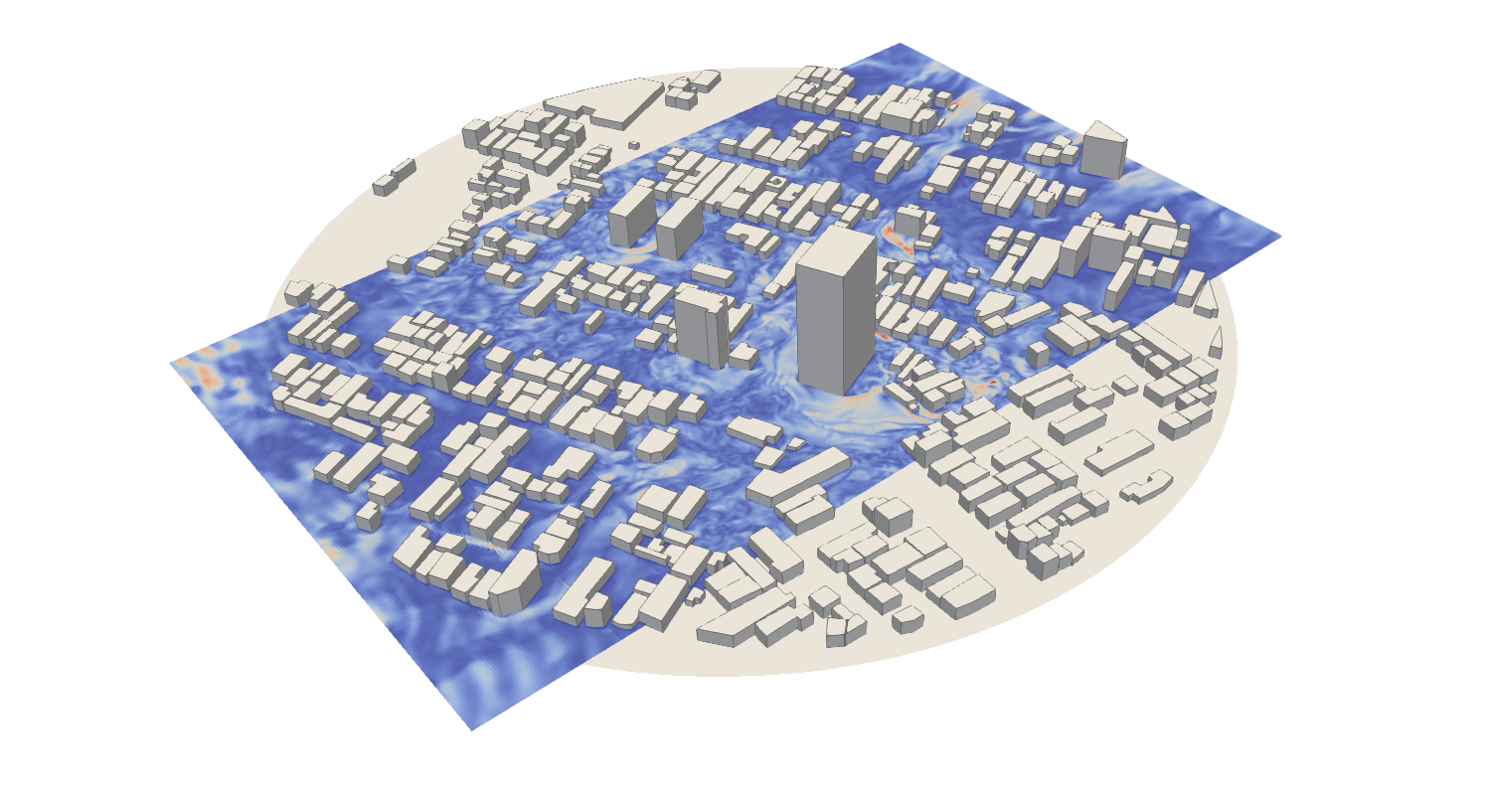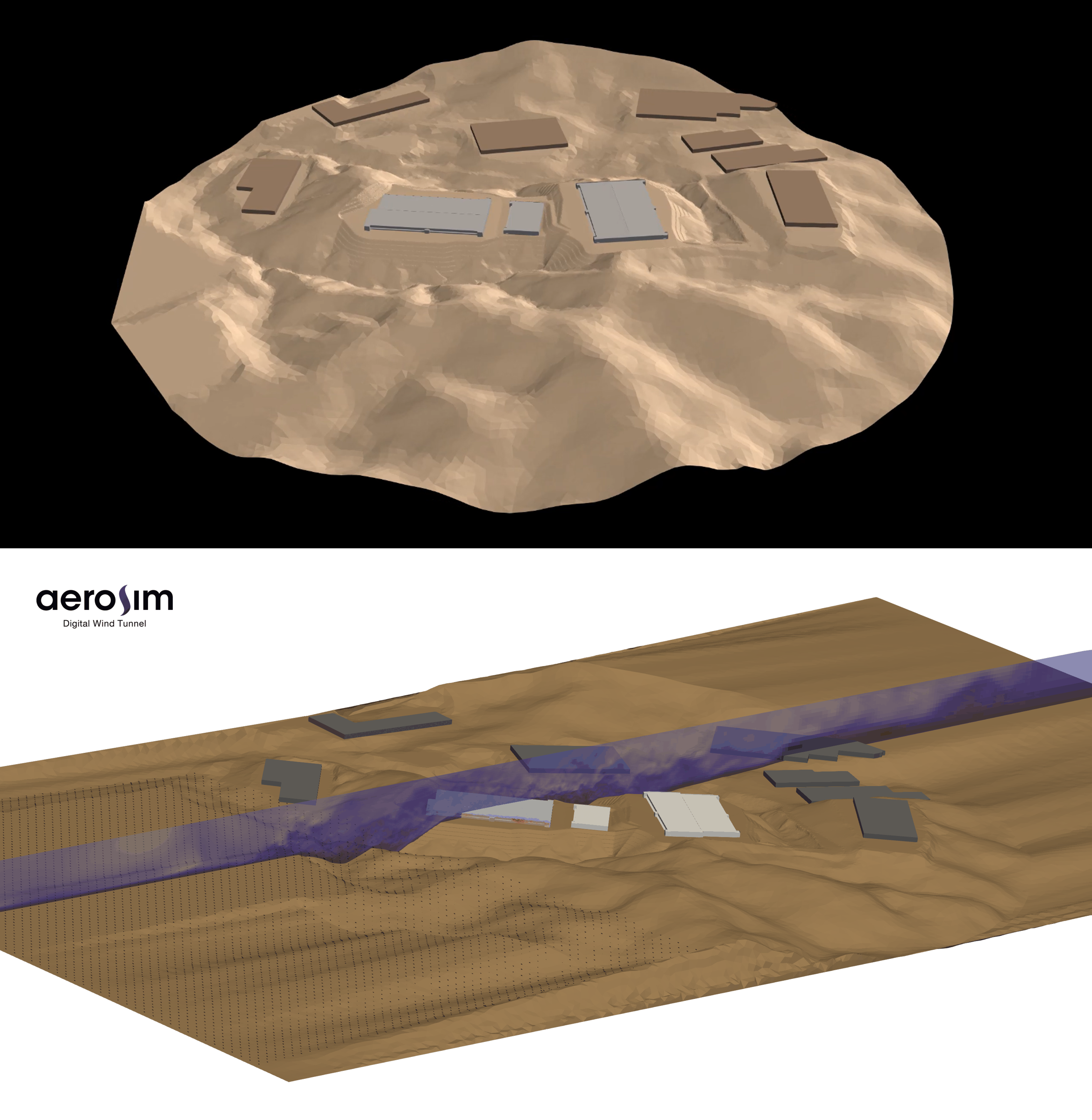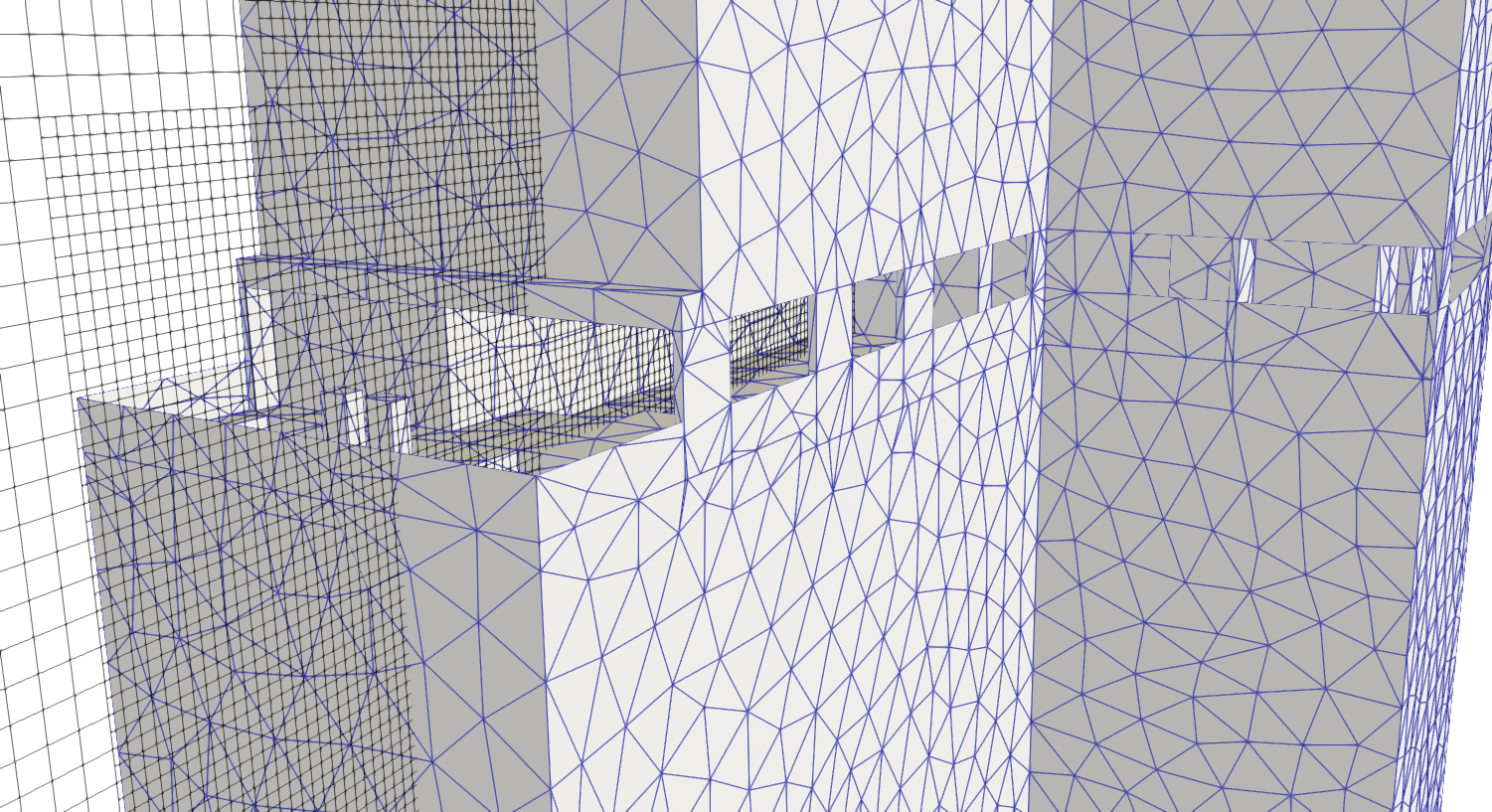What can I do with LBM in wind engineering?
Solutions to important problems in building physics and microclimate
 Wind engineering CFD simulations with LBM
Wind engineering CFD simulations with LBMIn our recent posts, we showed that LBM indeed solves mass and momentum conservation for fluid flow, and we demonstrated that mesh generation with the AeroSim software is a very simple and fast process. In this text, we will provide examples of problems that are very challenging for computational fluid dynamics (CFD) users, and that are a perfect match for a solution through LBM.
Large domains
Microclimate simulation problems involve very large domains. For example, a typical pedestrian comfort project may require solving air flow over a radius of up to 400 meters with high resolution. In projects to calculate the topographic speedup factor, a domain several kilometers in size may be necessary to resolve flow through valleys and hills.
Naturally, these problems generate node counts on the order of tens of millions. To solve such large problems using a CFD finite volume solver, the required equipment would be a cluster with several CPU nodes, which is very costly.
To address this, the AeroSim CFD software features a unique memory management architecture, making the LBM solver capable of allocating over 8 million nodes per GB of GPU memory. The mesh below was created to calculate wind speed at pedestrian level in a large urban center in Japan. The spatial discretization was set to Δx = 0.25 m, over a 250-meter radius, resulting in 60 million elements. The good part: on a single Nvidia RTX 5500 GPU, which costs only a small fraction of a CPU node, two simulations ran simultaneously! The mesh allocation capacity of this GPU with AeroSim software exceeds 160 million nodes.

Complex topography
When wind engineers need to perform microclimate studies in complex topographies, the challenge is significant. Wind tunnels are always flat, so the way to represent relief is always affected by the necessary simplifications in the model. One of the most important topographic effects is wind speedup, caused by the Venturi effect. This type of solution is highly impactful for the design of bridges and large logistical projects, for example.
The figure below shows a digital model with a diameter of 2600m, which was solved using AeroSim’s CFD software to calculate the speedup factors. The topography’s elevation differences (maximum and minimum) reached 90 meters! Using a multiblock mesh with 5 levels of refinement, the element count to solve this problem was approximately 98 million. This problem was easily handled by a Nvidia V100 GPU, with a processing time of less than 18 hours.

Detailed architectures
Another challenge for CFD users in the field of microclimate and building physics is working with highly detailed architectural designs. In general, this forces the user to simplify the geometry. Therefore, the user must first export the geometry into a format that their CAD software can edit, and then perform successive simplifications until the mesh meets the desired quality requirements.
With the Immersed Boundary Method (IBM) as the boundary condition for the surface, AeroSim’s CFD software makes all of this much more practical. The user only needs to apply a basic simplification to the geometry, removing details smaller than the level of refinement that will be used in the simulation. After this basic cleaning, the piece is imported in STL format into the software. AeroSim automatically converts the STL file into a point cloud that will represent the discretized building. This point cloud is automatically refined by the software, so that the body resolution is always equal to the resolution of the fluid mesh surrounding it.

Summary
This text has shown how AeroSim’s CFD software can be the ideal tool for solving complex problems in microclimate simulations, topographic effects, and flow around buildings with complex geometries. These problems were previously very costly and often rejected by consultants due to the lack of viable solutions. Now, AeroSim can help you expand your applications, reduce your project cycles, and deliver final products with superior aerodynamic performance.

Alan Lugarini
Alan is a computational fluid dynamics (CFD) scientist specializing in turbulence simulation techniques for wind actions.
